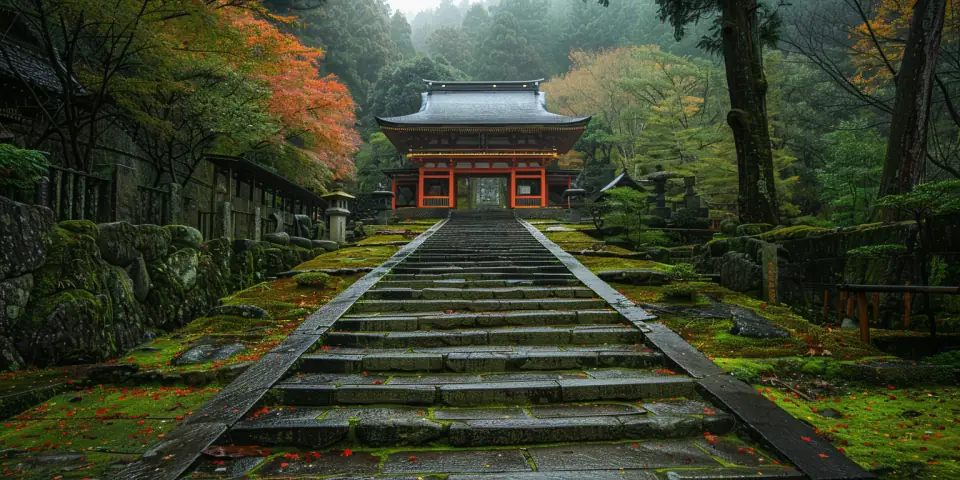
The Art of Kyo-Wagasa Umbrella Craftsmanship: Preserving Japanese Cultural Heritage
Origins and History
Embracing Tradition and Craftsmanship
In Japan, the art of traditional craftsmanship is deeply rooted in its culture and history. One such craft is the making of wagasa umbrellas, which has been passed down for centuries. The process of creating these intricate and elegant pieces requires meticulous attention to detail, respect for tradition, and a deep understanding of Japanese aesthetics.
To master this ancient craft, one must be willing to dedicate themselves to lifelong learning and refinement. As Nishibori, a renowned wagasa artisan, once said, “In the Japanese craft world, nobody says ‘I am a master.’ Mastery is symbolic; it represents lifelong dedication rather than an unbeatable title.” This mindset is essential for preserving traditional craftsmanship and passing it on to future generations.
For those interested in exploring this ancient art form, here are some key takeaways:
- Respect tradition: Understand the history and cultural significance of wagasa umbrellas in Japanese culture.
- Dedicate yourself to lifelong learning: Recognize that mastering a craft takes time, patience, and continuous refinement.
- Embrace the process: Focus on the meticulous attention to detail required to create these intricate pieces, and appreciate the beauty in the process.
- Preserve cultural heritage: Acknowledge the importance of passing on traditional craftsmanship to future generations while maintaining its authenticity.
By embracing these principles, one can not only master the art of wagasa umbrella-making but also contribute to the preservation of Japan’s rich cultural heritage.
Craftsmanship and Materials
Embracing Tradition and Craftsmanship
In Japan, traditional craftsmanship is deeply rooted in its culture and history. The art of making wagasa umbrellas is a prime example of this rich heritage. This intricate craft requires meticulous attention to detail, respect for tradition, and a deep understanding of Japanese aesthetics.
To master this ancient craft, one must be willing to dedicate themselves to lifelong learning and refinement. It’s essential to recognize that mastery represents lifelong dedication rather than an unbeatable title. This mindset is crucial for preserving traditional craftsmanship and passing it on to future generations.
For those interested in exploring this ancient art form, here are some key takeaways:
- Respect tradition: Understand the history and cultural significance of wagasa umbrellas in Japanese culture. Recognize the importance of preserving traditional craftsmanship while maintaining its authenticity.
- Dedicate yourself to lifelong learning: Mastering a craft takes time, patience, and continuous refinement. Be willing to learn from experienced artisans and continually improve your skills.
- Embrace the process: Focus on the meticulous attention to detail required to create these intricate pieces. Appreciate the beauty in the process, and don’t be discouraged by setbacks or failures.
By embracing these principles, you can not only master the art of wagasa umbrella-making but also contribute to the preservation of Japan’s rich cultural heritage. Here are some specific tips to help you on your journey:
- Start by learning about the history and cultural significance of wagasa umbrellas.
- Find an experienced artisan who is willing to guide you through the process.
- Be patient and persistent, as mastering this craft takes time and effort.
- Continuously refine your skills, and don’t be afraid to ask for feedback or guidance.
By following these tips and embracing the principles of traditional craftsmanship, you can help preserve Japan’s rich cultural heritage while creating beautiful and intricate wagasa umbrellas.
Cultural Significance and Preservation
Embracing Tradition and Craftsmanship
In Japan, traditional craftsmanship is deeply rooted in its culture and history. The art of making wagasa umbrellas is a prime example of this rich heritage. This intricate craft requires meticulous attention to detail, respect for tradition, and a deep understanding of Japanese aesthetics.
To master this ancient craft, one must be willing to dedicate themselves to lifelong learning and refinement. It’s essential to recognize that mastery represents lifelong dedication rather than an unbeatable title. This mindset is crucial for preserving traditional craftsmanship and passing it on to future generations.
For those interested in exploring this ancient art form, here are some key takeaways:
Respect tradition by understanding the history and cultural significance of wagasa umbrellas in Japanese culture. Dedicate yourself to lifelong learning, embracing the process, and focusing on meticulous attention to detail.
To help you on your journey, start by learning about the history and cultural significance of wagasa umbrellas. Find an experienced artisan who is willing to guide you through the process. Be patient and persistent, as mastering this craft takes time and effort. Continuously refine your skills, and don’t be afraid to ask for feedback or guidance.
Additionally, consider the following tips:
- Practice patience and persistence, as creating a wagasa umbrella can take several months.
- Use high-quality materials, such as bamboo and washi paper, to ensure durability and beauty.
- Pay attention to the intricate details, including the shape of the umbrella’s skeleton and the application of hari paste.
- Join a community or find a mentor who can provide guidance and support throughout your learning journey.
By embracing these principles and following these tips, you can not only master the art of wagasa umbrella-making but also contribute to the preservation of Japan’s rich cultural heritage.
Recent Posts
- Discovering the Art of Japanese Knives Jul 8, 2024
- The Cultural Significance of Japanese Masks Jul 8, 2024
- A Comprehensive Guide to Living as a Digital Nomad in Tokyo, Japan Jul 8, 2024
- Discovering Tokyo's Literary Gems: A Guide to Jimbocho and Beyond Jul 8, 2024
- Japanese Tour Packages for Anime Enthusiasts Jul 8, 2024
- Discovering the Serenity of Japanese Zen Gardens Jul 8, 2024
- Mastering Tokyo: The Ultimate Travel Guide Jul 8, 2024
- Discovering Japan's Public Baths: A Guide to Sento and Onsen Jul 8, 2024
- Exploring Tantojutsu: Traditional vs Combatives Application in Self-Defence Jul 8, 2024
- The Evolution and Cultural Significance of Japanese Irezumi Jul 8, 2024
